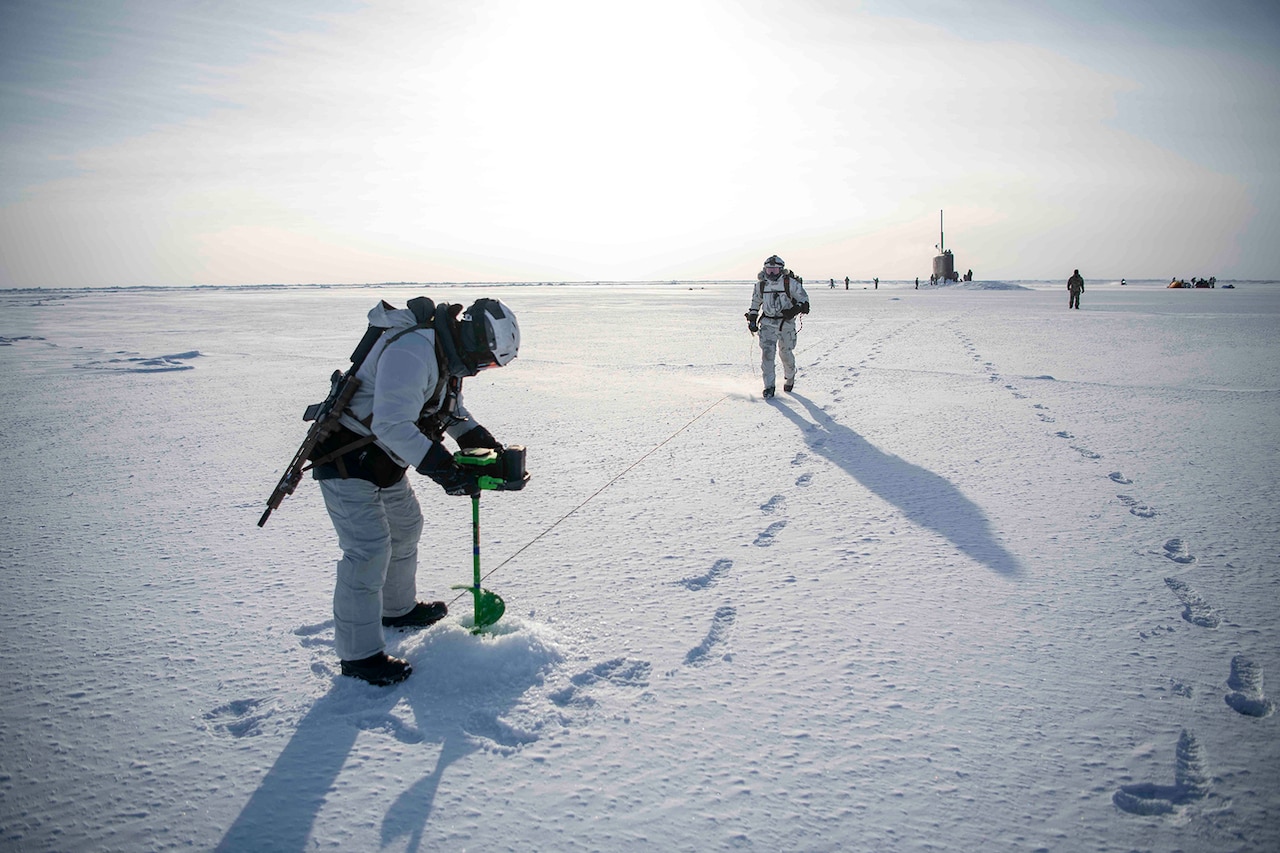DOD Combines Adaptation, Mitigation to Confront Climate Change
DOD Combines Adaptation, Mitigation to Confront Climate Change Department of Defense


The Defense Department’s Approach to Confronting Climate Change

The Defense Department (DOD) is actively engaging a two-pronged approach to confront climate change by avoiding the unmanageable while at the same time managing the unavoidable, according to Kate White, the DOD Climate Resilience Program Director.
Emphasizing the Importance of Climate Change
During Earth Day remarks at Brown University’s Watson Institute for International and Public Affairs, Kate White highlighted how seriously DOD takes climate change amid increased demands on military operations at home and around the world. She emphasized that environmental conditions directly affect military planning and decision-making processes. Therefore, it is crucial to pay attention to the climate when addressing instability, competition, and conflict.
Pursuing Climate Resilience
To meet the challenges presented by climate change, DOD is actively pursuing the concept of climate resilience. This involves the ability to anticipate, prepare for, and adapt to changing climate conditions while also responding to and rapidly recovering from climate disruptions.
Combining Adaptation and Mitigation
DOD combines the concepts of adaptation and mitigation in its efforts to achieve climate resilience. Adaptation involves managing the unavoidable changes that are coming, even if greenhouse gas emissions were to cease tomorrow. White mentioned data showing that rising sea levels and atmospheric temperature changes will continue for hundreds of years. Therefore, it is essential to adapt now rather than waiting for perfect information. Mitigation, on the other hand, focuses on managing greenhouse gases to prevent further warming and extreme events.
Considering a Wide Range of Models
In preparing for future changes to the climate, White emphasized the importance of considering the widest possible range of models. This ensures that DOD can make informed decisions regarding equipment functionality, personnel performance, and operational capabilities under various climate conditions.
Examples of Climate Change Impact
White provided several examples of how recent changes in the climate have directly impacted different branches of the military. These include an increase in flooding on U.S. and overseas military installations, thawing permafrost in the Arctic, and a strain on Air Force resources due to an increased demand to fight wildfires.
Moving Forward with Climate Adaptation
Looking ahead, DOD will continue implementing its climate adaptation plan by making tough decisions on managing vulnerable installations, decreasing operational energy use, and supporting innovation. White emphasized the importance of harnessing the innovative capabilities of the American people to develop technological solutions that reduce greenhouse gas emissions.
Conclusion
Kate White presented her Earth Day remarks to a group of military fellows completing their professional military education at Brown University’s Watson Institute for International and Public Affairs. The program provides U.S. and international military officers with opportunities for advanced education and engagement in security-related research and discussions.
SDGs, Targets, and Indicators Analysis
1. Which SDGs are addressed or connected to the issues highlighted in the article?
- SDG 13: Climate Action
The article discusses the Defense Department’s approach to confronting climate change, emphasizing the importance of climate resilience and the management of greenhouse gases. This aligns with SDG 13, which aims to take urgent action to combat climate change and its impacts.
2. What specific targets under those SDGs can be identified based on the article’s content?
- Target 13.1: Strengthen resilience and adaptive capacity to climate-related hazards and natural disasters
- Target 13.2: Integrate climate change measures into national policies, strategies, and planning
- Target 13.3: Improve education, awareness-raising, and human and institutional capacity on climate change mitigation, adaptation, impact reduction, and early warning
- Target 13.b: Promote mechanisms to raise capacity for effective climate change-related planning and management in least developed countries and small island developing states
The Defense Department’s focus on climate resilience, adaptation, and mitigation aligns with these targets under SDG 13.
3. Are there any indicators mentioned or implied in the article that can be used to measure progress towards the identified targets?
- Indicator 13.1.1: Number of deaths, missing persons, and directly affected persons attributed to disasters per 100,000 population
- Indicator 13.2.1: Number of countries that have integrated mitigation, adaptation, impact reduction, and early warning into primary, secondary, and tertiary curricula
- Indicator 13.3.1: Number of countries that have communicated the establishment or operationalization of an integrated policy/strategy/plan which increases their ability to adapt to the adverse impacts of climate change, and foster climate resilience and low greenhouse gas emissions development in a manner that does not threaten food production
- Indicator 13.b.1: Number of least developed countries and small island developing states that are receiving specialized support, and amount of support, including finance, technology transfer, and capacity-building, for mechanisms for raising capacities for effective climate change-related planning and management
The article does not explicitly mention these indicators, but they can be used to measure progress towards the identified targets. For example, the number of deaths, missing persons, and directly affected persons attributed to disasters can be used to measure progress towards Target 13.1.
Table: SDGs, Targets, and Indicators
| SDGs | Targets | Indicators |
|---|---|---|
| SDG 13: Climate Action | Target 13.1: Strengthen resilience and adaptive capacity to climate-related hazards and natural disasters | Indicator 13.1.1: Number of deaths, missing persons, and directly affected persons attributed to disasters per 100,000 population |
| SDG 13: Climate Action | Target 13.2: Integrate climate change measures into national policies, strategies, and planning | Indicator 13.2.1: Number of countries that have integrated mitigation, adaptation, impact reduction, and early warning into primary, secondary, and tertiary curricula |
| Target 13.3: Improve education, awareness-raising, and human and institutional capacity on climate change mitigation, adaptation, impact reduction, and early warning | Indicator 13.3.1: Number of countries that have communicated the establishment or operationalization of an integrated policy/strategy/plan which increases their ability to adapt to the adverse impacts of climate change, and foster climate resilience and low greenhouse gas emissions development in a manner that does not threaten food production | |
| Target 13.b: Promote mechanisms to raise capacity for effective climate change-related planning and management in least developed countries and small island developing states | Indicator 13.b.1: Number of least developed countries and small island developing states that are receiving specialized support, and amount of support, including finance, technology transfer, and capacity-building, for mechanisms for raising capacities for effective climate change-related planning and management |
Behold! This splendid article springs forth from the wellspring of knowledge, shaped by a wondrous proprietary AI technology that delved into a vast ocean of data, illuminating the path towards the Sustainable Development Goals. Remember that all rights are reserved by SDG Investors LLC, empowering us to champion progress together.
Source: defense.gov

Join us, as fellow seekers of change, on a transformative journey at https://sdgtalks.ai/welcome, where you can become a member and actively contribute to shaping a brighter future.







